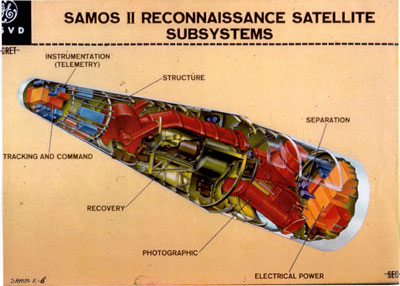
Since at least February, the Syrian government has been using Iranian-built drones to track and target Free Syrian Army rebels in their strongholds, including Homs and Hamah. Now some fresh commercial satellite imagery provides new details about the unmanned aerial vehicles' possible tactics and capabilities.
Based on the imagery, acquired by George Kaplan for his blog Open-Source Geo-Intelligence, the small unarmed, propeller-driven Mohajer 4 drone is apparently limited in range. The Mohajer 4 most likely relies on control signals radioed from its launch base, unlike some Western 'bots which can be controlled via satellite from facilities pretty much anywhere in the world. The Syrian UAV's ability to transmit video is probably equally constrained.
The first glimpse by outsiders of drones in Syria came in February, when someone uploaded a video to YouTube depicting what appeared to be a UAV flying over the rebel-controlled town of Kafr Batna. (The February video has been rehosted several times.) Later there was at least one more sighting of a UAV in the insurgent city Homs.
Damascus is not particularly known for operating UAVs. So there was speculation that the drone was U.S. or Israeli and being used to spy on the regime ahead of any possible intervention. But informed observers soon identified the Kafr Batna 'bot as an Iranian-built Mohajer 4, also known by its general term pahpad, which debuted in a 2010 Iranian naval exercise. 'In addition to reconnaissance flight over the operation field, this kind of drone brings ease to battle command by transferring real-time data,' Iranian Brig. Gen. Amir Ali Hajizadeh boasted at the time.
The Pentagon later copped to sending its own drones, most likely high-flying Global Hawks or stealthy Sentinels, over Syria to monitor the escalating civil war. Compared to the large, sophisticated American models, the Mohajer 4 is tiny (just 10 feet long), non-stealthy and likely limited in capability. Damascus does not possess a global satellite communications network, so its drones are likely controlled via line-of-sight radio. Assuming a 100-foot-tall radio antenna and a UAV flying at an altitude of 300 feet, the useful range of the Mohajer 4 is probably no more than 40 miles.
Indeed, Kaplan's latest GeoEye satellite imagery shows the Mohajer 4s operating from Shayrat, a jet base just 18 miles from Hamah. 'This ' may suggest a shorter operational range for the pahpad than initially thought,' Kaplan wrote.
Syria's rudimentary communications network also argues for a simple, point-to-point imagery transfer from drone to ground station. In other words, a Mohajer 4 drone probably beams back video directly, and solely, to the ground station from which the UAV is also launched and steered. Contrast this with U.S. drones, the biggest of which can beam imagery to many, distant locations simultaneously. Kaplan's images from Shayrat depict what is apparently the Mohajer 4s' control station, a shed-like facility with some kind of vehicle attached.
Damascus is not the only foreign government or group to benefit from Iran's homemade drone tech, plus whatever insight Tehran has gleaned from its captured U.S. Sentinel. Hezbollah has operated Iranian UAVs. Tehran is also helping Venezuela develop a basic drone. But Syria is different: Here Iran's UAVs are contributing to a brutal and bloody campaign of oppression.
Fortunately, the Mohajer 4s are about as rudimentary as military drones get these days.
Tidak ada komentar:
Posting Komentar